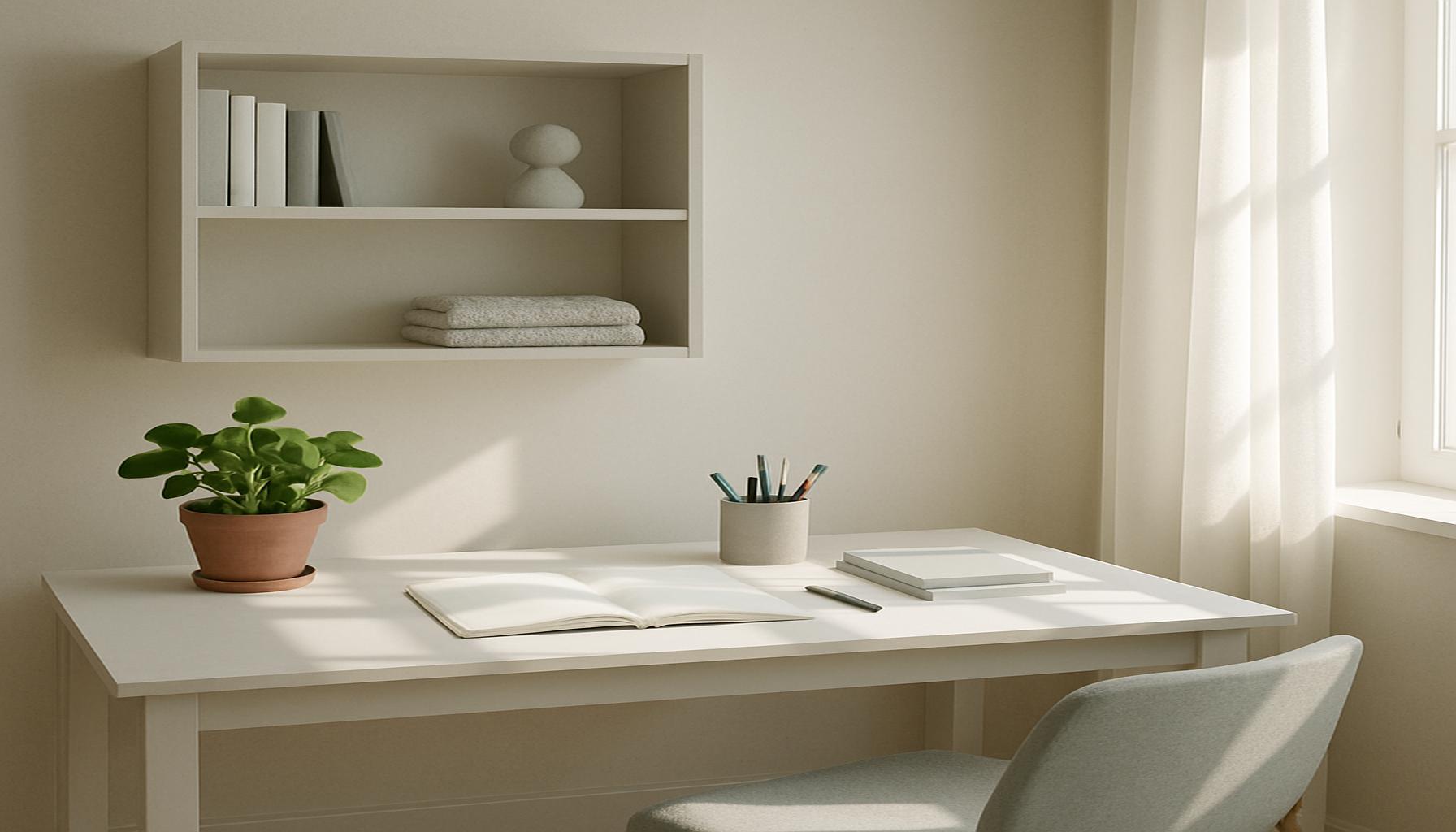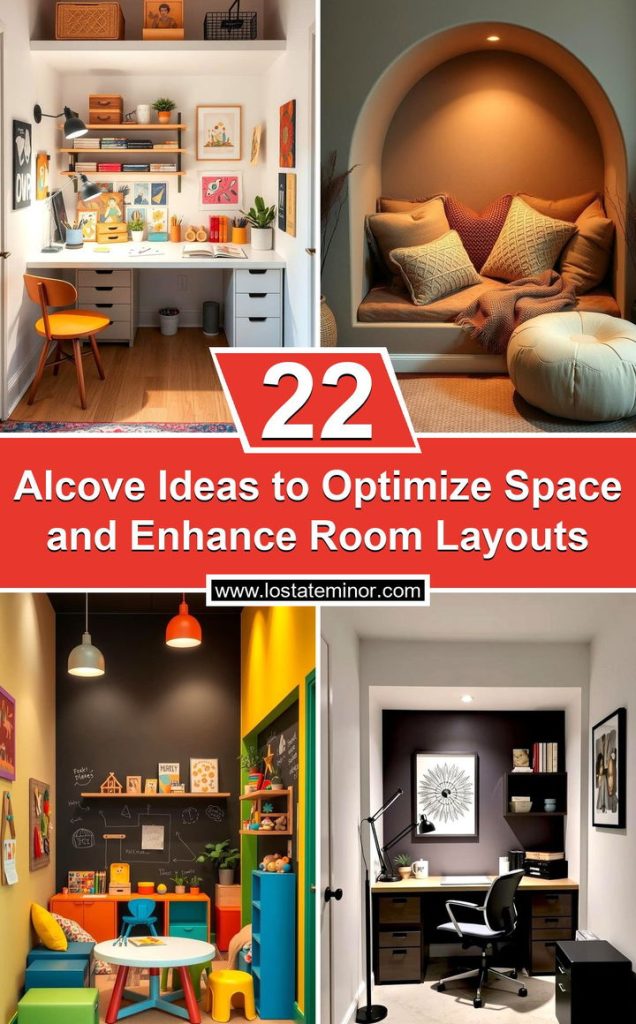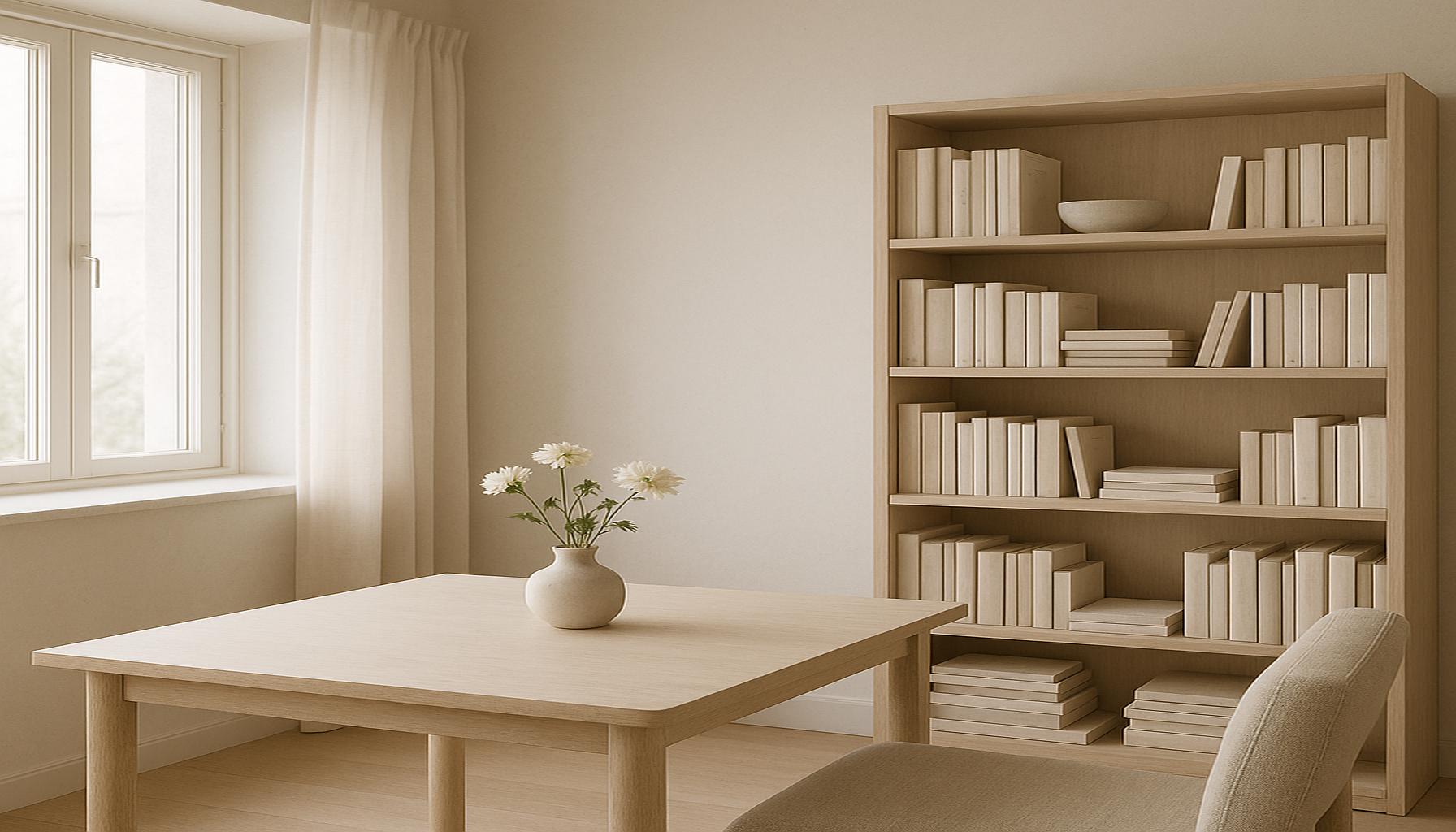Demystifying Simplicity Practical Tips to Organize Mind Space

Demystifying Simplicity: The Intersection of Minimalism and Personal Organization
In an increasingly chaotic world, simplicity has become a desired state for many individuals seeking balance. The minimalist movement emphasizes the importance of removing physical and mental clutter to enhance clarity and well-being. By organizing both our spaces and our minds, we pave the way for a more fulfilling life.
Understanding how to effectively organize your environment can lead to significant improvements in overall mental health. A clutter-free space not only enhances focus but also fosters creativity. Moreover, mindful organization can empower you to prioritize what truly matters in your life.
Why It Matters
- Promotes better mental clarity
- Encourages intentional living
- Reduces stress and anxiety
- Enhances productivity
- Creates a sense of peace
This article will explore the Top 5 practical strategies to help you declutter your space and mind. These insights will not only simplify your environment but also elevate your mental state. Ready to embark on your journey towards simplicity? Let’s dive in!
Demystifying Simplicity: Practical Strategies to Organize Your Space and Mind
In an era defined by rapid change and constant activity, the concept of minimalism attracts those yearning for peace and lucidity. More than a fad, the journey toward embracing simplicity involves a comprehensive approach that encompasses not only the reduction of physical clutter but also the cultivation of a harmonious and serene mindset. By implementing practical strategies, you can initiate a transformative process and discover the genuine essence of simplicity. In this article, we explore five impactful strategies to begin this journey toward a more organized and composed life.
5. Create a Daily Routine
A well-structured daily routine is foundational to developing an organized lifestyle and fostering mental clarity. By setting specific times for daily activities, you can enhance productivity and combat decision fatigue—a phenomenon that can sap energy and lead to decreased efficiency.

- Prioritize Your Tasks: Each morning, list the most important tasks of the day to maintain focus. For instance, if you are aware that mornings are your most productive period, reserve this time for high-concentration tasks.
- Incorporate Breaks: Schedule intermittent breaks throughout your day to recharge your mind and maintain creativity. Techniques such as the Pomodoro Technique, where you work for 25 minutes followed by a 5-minute break, can be highly effective.
- Consistent Sleep Patterns: Establish a consistent bedtime to improve energy levels and overall well-being. Research indicates that consistent sleep cycles lead to improved cognitive function and mood stabilization.
Creating a daily routine not only streamlines your daily activities but also provides the mental bandwidth for more significant decisions. It’s akin to automating mundane processes, saving your cognitive resources for when creativity or critical thinking is required.
4. Declutter Regularly
Our physical surroundings profoundly influence our mental states, and regular decluttering helps eliminate unnecessary items that weigh us down. Clutter can often lead to an overwhelming and chaotic mental state, hindering productivity and peace.
- One Room at a Time: Concentrate on decluttering one room per session to avoid feeling overwhelmed. Tackle rooms according to their usage frequency; for example, start with high-traffic areas such as the kitchen or living room.
- Use the Four-Box Method: This method involves labeling boxes with Keep, Donate, Trash, and Relocate to systematically filter through items. Letting go can be emotionally taxing, but this structured approach aids decision-making.
- Set a Time Limit: Allocating a specific timeframe for decluttering can maintain momentum and prevent procrastination. Consider setting short, achievable goals, such as decluttering for just fifteen minutes a day.
When your physical space reflects your personal values and necessities, it fosters a serene and organized mindset, inviting tranquility into your everyday life.
3. Embrace Technology Wisely
In our digitally connected age, technology is a double-edged sword. It can either overwhelm us with constant notifications and digital clutter or be leveraged as a tool to enhance organization and productivity.
- Use Organizational Apps: Employ apps like Trello for task management or Evernote for capturing ideas and notes efficiently. These platforms can serve as digital extensions of your memory, allowing you to stay organized no matter where you are.
- Establish a Digital Declutter Routine: Regularly sort through digital files and emails to keep your digital workspace clutter-free. Weekly digital clean-ups can drastically reduce unnecessary digital noise.
- Set Boundaries: Define specific periods for screen time to minimize distractions. Consider utilizing tools like screen-time trackers to monitor and restrict your digital engagement.
By incorporating technology thoughtfully and mindfully, you can streamline your organizational strategies without succumbing to digital distractions. This harmonious integration empowers you to harness the benefits of technology effectively.
2. Cultivate Mindfulness Practices
Organization is not solely about managing physical items; mental clarity plays a pivotal role in maintaining an organized life. Mindfulness practices are fundamental for improving concentration, reducing stress, and facilitating a balanced state of being.
- Meditation: Dedicate a portion of your day to mindfulness meditation. This practice can be as simple as spending ten minutes focusing on your breathing, cultivating a sense of calm and presence.
- Gratitude Journaling: Reflect daily on what you are grateful for. Documenting these thoughts encourages a positive outlook and can shift your perspective toward abundance and contentment.
- Deep Breathing Exercises: Regularly engage in deep breathing practices to ease stress and enhance focus. Taking a few moments for deep breaths amid chaos can be transformative.
As mindfulness becomes a part of your routine, the clarity it brings will reinforce your dedication to simplicity in both your spatial and mental environments.
1. Adopt the 80/20 Rule (Pareto Principle)
Perhaps the most transformative method for achieving simplicity is understanding and applying the 80/20 Rule, also known as the Pareto Principle. According to this rule, 80% of your results are derived from 20% of your efforts. This principle can significantly optimize your organizational efforts, enhancing efficiency.
- Evaluate Your Inventory: Identify the 20% of belongings or tasks that contribute most to your happiness and success. This evaluation can lead to a clearer understanding of what truly matters.
- Focus on High-Impact Tasks: Prioritize tasks that yield significant outcomes, devoting your time and resources to what matters most. Recognizing the most valuable activities can guide better time management and increased productivity.
- Eliminate Excess: Consciously decide to let go of activities, possessions, or commitments that do not serve your larger goals or well-being. Learning to say no is essential to maintain focus and reduce stress.
By adopting the 80/20 principle, you can concentrate your energy on aspects that significantly influence your life, thereby simplifying complexity and fostering clarity.
The pursuit of simplicity is an ongoing journey, and integrating these strategies into your daily life can lead to profound transformations, both tangible and intangible. Whether through establishing consistent routines, adopting new digital tools, or refining your focus, the pathway to a simpler, more fulfilling life awaits. Consider these strategies as tools in your arsenal to navigate the complexities of modern living with grace and ease, revealing the peace and order that lies beyond the chaos.
| Category | Key Features | Advantages | Disadvantages | Who Would Benefit Most |
|---|---|---|---|---|
| Physical Organization | Utilization of space, decluttering strategies, and storage solutions. | Reduces stress by providing a calm environment; enhances productivity by minimizing distractions. | Initial time investment can be high; some may struggle with letting go of items. | Individuals feeling overwhelmed by clutter or those seeking a more efficient workspace. |
| Mental Clarity Techniques | Mindfulness practices, prioritization of tasks, and time management strategies. | Improves focus and decision-making abilities; helps in managing anxiety effectively. | May require consistent practice; benefits may take time to become apparent. | Students, professionals, or anyone facing mental overload from daily stressors. |
| Routine Establishment | Daily schedules, habits formation, and accountability systems. | Increases productivity and self-discipline; ensures that tasks are completed efficiently. | Routines can feel restrictive; adapting to new ones can be challenging. | Busy professionals or anyone looking to establish more structured daily habits. |
| Decluttering Mindset | Approaching life with a minimalist perspective, evaluating what truly adds value. | Fosters emotional well-being and encourages intentional living; helps in recognizing what is essential. | Requires introspection and honesty; can feel overwhelming at first. | Individuals seeking deeper fulfillment and a more meaningful approach to life. |
Frequently Asked Questions about Simplifying Your Space and Mind
What is the primary benefit of simplifying my space and mind?
Simplifying your space and mind can lead to improved mental clarity and reduced stress. When your surroundings are organized, you’re less likely to feel overwhelmed by clutter. This, in turn, allows your mind to focus more effectively on tasks at hand and increases your productivity. The principle of minimalism, for instance, relies on the idea that less is more, helping individuals achieve a more serene and fulfilling lifestyle.
How can I start simplifying my space without feeling overwhelmed?
Begin with small steps. Choose a specific area or category to focus on, such as your desk or a closet. Dedicate a set time daily or weekly, and gradually increase as you grow comfortable. Consider methods like the KonMari Method, which suggests keeping only those items that truly spark joy. Understanding that the process is a journey rather than a destination can also help alleviate pressure.
What tools or strategies can aid in organizing my mind as well as my space?
Tools such as journals and digital planners can be very effective. Mind maps can help in organizing thoughts and visualizing your goals and tasks. Meditation and mindfulness practices are also crucial for mental organization as they promote a sense of calm and enhance focus. For your physical space, apps for task management and digital file organization can significantly contribute to maintaining order and reducing cognitive load.
Can simplifying my space influence my relationships?
Yes, streamlining your surroundings can positively impact relationships. An organized space often leads to reduced stress, which in turn fosters better communication and emotional availability. By creating a calming environment, you can engage more fully with others and support a sense of harmony in your relationships.
Is living a simplified life a realistic goal for everyone?
Living a simplified life is highly personal and varies greatly across different lifestyles and responsibilities. However, anyone can adopt elements of simplification that resonate with their circumstances. The key is to find a balance that works for you, whether it means decluttering physical belongings or prioritizing mental space. The flexibility of simplicity allows you to create a manageable and tailored approach.
Conclusion: Embracing Simplicity for a Balanced Life
In a world overflowing with stimuli and distractions, the journey to simplicity—both in our surroundings and our minds—becomes not just desirable, but essential. Through our exploration of practical strategies for organization, we’ve delved into the profound impact that a clear space can have on mental clarity. This journey is about more than just tidying up physical spaces; it is about fostering an environment where the mind can thrive, free from the chaos of clutter.
The core of this article underscores several key techniques. By adopting minimalist principles, focusing on essential items, and creating designated spaces for belongings, individuals can carve out a sanctuary that promotes peace and efficiency. The act of simplifying doesn’t strip away comfort; instead, it amplifies it, providing room for what truly matters. Moreover, the benefits extend beyond the tangible, as a structured environment supports a structured mind, improving focus, reducing stress, and enhancing creativity.
Understanding the psychological benefits of a minimalistic approach is equally vital. A well-organized space mirrors and influences our mental state, underscoring the cyclical relationship between our environment and our mental health. By embracing simplicity, individuals are more likely to experience increased productivity, greater mental freedom, and a more fulfilling lifestyle.
In conclusion, the pursuit of simplicity requires intentional actions but offers profound rewards. As individuals seek to incorporate these strategies into their daily lives, they will likely discover a newfound harmony between their physical and mental worlds. This blend not only leads to enhanced personal organization but can transform the way one interacts with the world. Seeking further insights into minimalism can unveil an enriching narrative that goes beyond decluttering—it’s about nurturing a mindful way of living.


